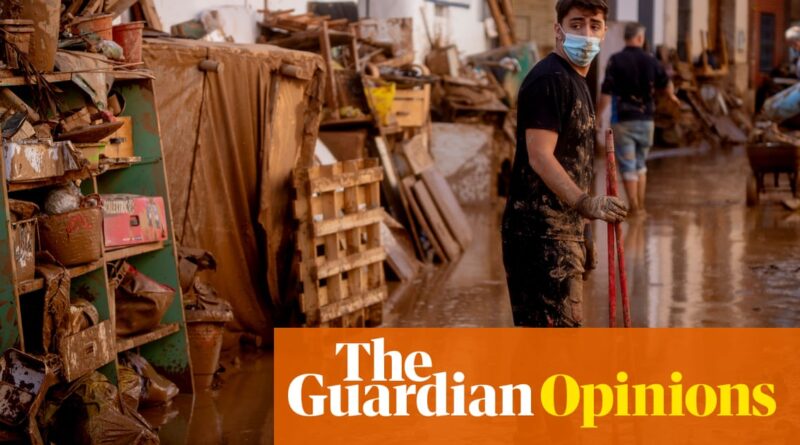Why did so many people die in Spain? Because Europe still hasn’t accepted extreme weather | Friedrich Otto
AAt the time of writing, the death toll has risen to 214. Crashed cars and other debris are piled up in the streets, large areas of Valencia are still under water, and Spain is still in mourning. On Sunday, anger erupted as the king and queen of Spain were pelted with mud and other objects by protesters. Why did so many people perish in the flood that was predicted to happen in a rich country?
From a high point in the global north, climate change caused by the burning of coal, oil and gas has long been seen as a distant threat, affecting poor people in the global south. These misconceptions have perpetuated a false sense of security.
Scientists have long known that warming the climate with fossil fuel emissions will cause floods, hurricanes, heat waves, droughts and wildfires. However, it was in 2004 that the first study linked a weather event – the European heat wave of 2003 – to climate change. Despite the evidence, people have been reluctant to link bad weather to the climate crisis.
I founded World Weather Attribution in 2014 to change the conversation. Our case studies are conducted quickly, days or weeks, after weather disasters to inform people in real time about the climate disaster.
A quick analysis after the floods in Spain found that extreme weather conditions made heavy rainfall 12% more severe. Despite this, in Paiporta, where at least 62 people died, the mayor said the floods were unusual and “people are not afraid”. But the changing climate is making the once-unusual events more common.
Record-breaking events like preparation are difficult – how do you talk about the extreme risk of something that no one has ever experienced before?
We saw this happen recently after Hurricane Helene made landfall. More than 200 people have died in floods in the southern Appalachian region of the US. Despite “catastrophic and life-threatening” flood warnings before the disaster, people were still outside when the disaster hit, and many did not understand what the heavy rains were. how strong will they be.
However, in Spain, people were only warned as it was happening. Warnings were not sent until many people were already trapped in flooded homes or underground parking lots, trying to get their cars to higher ground.
The same thing happened – or rather it didn’t happen – in Germany in 2021. No information was given on how to work and, unfortunately, no support was given on when they can’t help themselves: in the German city of Sinzig, 12 residents of a home for people with disabilities drowned. Back in Spain, the death of one care home resident has already been reported and I fear more disturbing stories like this will emerge in the coming weeks.
World Weather Attribution studied 30 devastating floods, and in almost all cases, including in developing countries, we found that the rainfall was well predicted. But as we saw in Spain, predictability is not enough. Those warnings, when they finally arrived, did not include important information about where to move and how to leave.
Local governments and emergency services are important intermediaries between weather services and people at risk. They need to be strengthened and not demolished, as was the case with the Emergency Center of Valencia.
It is clear that Spain’s disaster management systems need to be improved. More broadly, we need to ask tough questions about international disaster funding – should the EU have funding for prevention, rather than cleaning up the mess after a disaster? hit it? In my opinion, it must increase the funds and develop coordinated plans.
We will see extreme weather events as long as we keep burning coal. Today we are at 1.3C of warming, but we are on track to experience up to 3C by 2100, which could mean the same floods in Spain that are increasing in frequency and severity. Without creating an action plan and knowing exactly how to implement it, such as training, the death toll will always be high when the temperature record is broken or the area is the new one gets the force of a hurricane, as happened in Spain.
Investing in people and emergency services will save lives. But governments cannot build back in the same way. In almost all inhabited Europe, rivers have canals, and all areas are sealed with concrete and asphalt to create a beautiful vehicular city. If we want to start caring about people, we need to give the rivers a place again, so that they have somewhere to go, instead of entering people’s homes. Urban sprawl across Europe is creating more landlocked areas and exposing increasing numbers of people to devastating floods.
We Europeans need to learn and rebuild the emerging future. But very quickly, we have to adapt to live in a changing world.
#people #die #Spain #Europe #hasnt #accepted #extreme #weather #Friedrich #Otto
